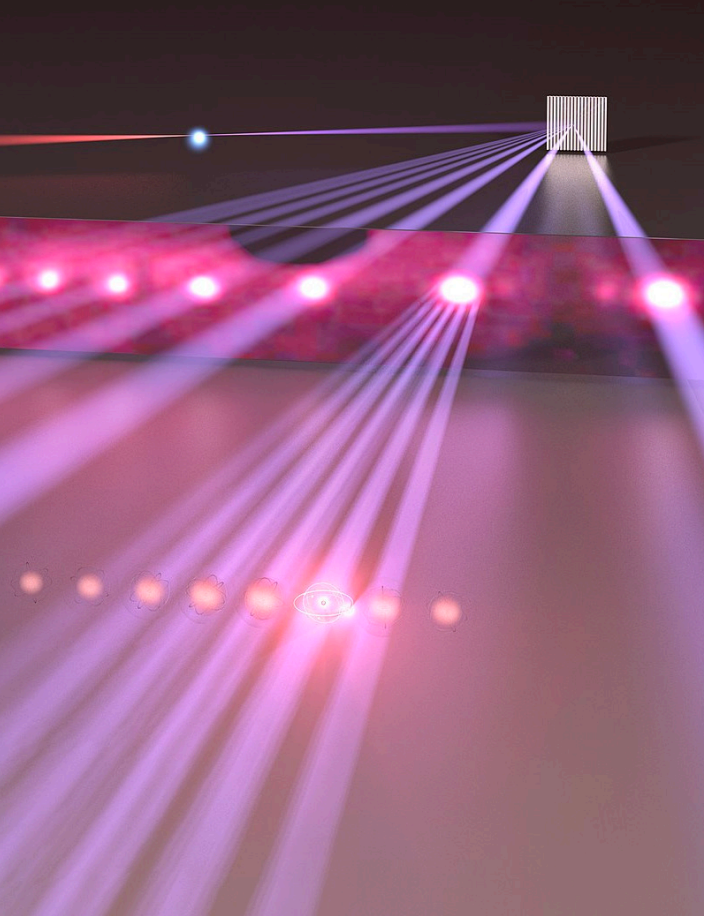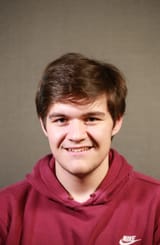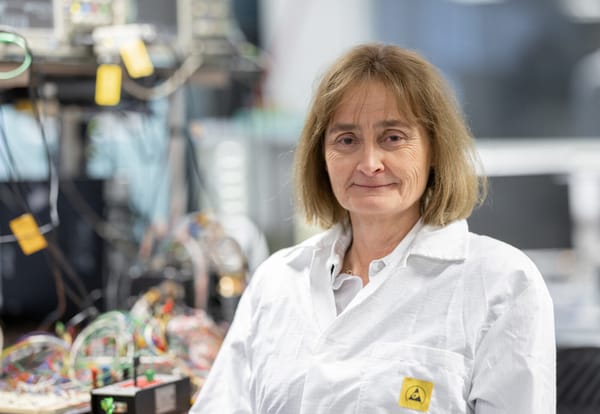Nobel Prize in Physics flashes new glimpse into attosecond science
Felix talks with Imperial’s Professor Jon Marangos to discuss Nobel-winning attosecond science.

Three pioneers in attosecond physics, a branch of physics involved in light-matter interaction, have been awarded the 2023 Nobel Prize in physics for their groundbreaking work probing how the tiny constituents of atoms, electrons, move within their atomic home. The Lockyer Chair of the Physics Department at Imperial College London, Professor Jon Marangos, is a specialist in measurements at attosecond timescales. With a lecturing stint at Imperial spanning over 25 years, we couldn’t resist sitting down with him to pick his brain about his field of expertise, which has this year been awarded the Nobel Prize in Physics.
Ultrafast Physics
Professor Marangos characterises the length (or lack thereof) of an attosecond by comparing it to a human heartbeat. He explains that there are around “10^18 heartbeats in the history of the universe” and that there are “10^18 attoseconds in one heartbeat”. Attosecond science is vital to investigate small physical phenomena with impressive resolution. These include atoms, molecules, and electrons in matter. This demands that photon pulses used to probe the phenomena be on the order of attoseconds.
Imperial College is home to the Blackett Laboratory Laser Consortium, where Professor Marangos is director. The aim of the “Attosecond Electron Dynamics in Molecular and Condensed Phase Systems Project” is to investigate and create methods - both theoretical and experimental - to probe the behaviour of molecules and condensed matter.
Nobel Winners
The first key breakthrough in Attosecond physics came in 1987, when Anne L’Huillier and colleagues at Lund University discovered that an infrared laser shone through inert, noble gases produced light that contained unusually short bursts with constant intensity. L’Huillier laid the mathematical frameworks of this effect, which set the scene for future research in refining this strange light source and probed its use to produce attosecond light pulses.
Marangos explains, “Anne's results really showed a characteristic phenomenon, which is this extended plateau. Suddenly you have this broad band light source with relatively balanced amplitudes across all the frequency components. And so Anne L’Huillier was one of the first people to realise that this meant in principle you had something that you could use to synthesize a very short pulse, because the bandwidth theorem tells us that the frequency bandwidth, multiplied by the time duration, is limited by a number on the order of one. If you want to have a very short time duration, you have to have a very large frequency bandwidth.”
Following L’Huillier’s results, ideas in the field of attosecond pulse duration began to develop throughout the 90s, with the first demonstrations of attosecond pulse duration being intimately related to radical developments in laser technology, such as mode locking and light-pulse duration measurements. This made it possible to probe how atoms move in a molecule, and, in particular, the opportunity to study transition states in chemical reactions. Studying these states through ultrafast lasers won the father of femtochemistry, Ahmed Zewial, the Nobel for Chemistry in 1999.
In 2001, Ferenc Krausz of the Max Planck Institute of Quantum Optics and Pierre Agostini at Ohio State University both independently developed techniques building on L’Huillier’s work to finely produce attosecond pulses and thus control how long they lasted.
“The first demonstrations of attosecond pulse duration were pioneered on the one hand the group of Pierre Agostini in France and on the other hand by the group of Frank Krausz working in Hungary. What Pierre Agostini did, even before Ann discovered high harmonic generation, is that he had discovered a phenomenon called Above-Threshold Ionisation, where you see electrons can acquire excess photons above the energy they need to just ionize. This shows up in an electron spectrum as a series of peaks, which are really closely related to the harmonic peaks that you see in a high harmonic spectrum.”
“So he had already been very much a founder of the field back in the 70s. He then went along and developed the reconstruction of attosecond beating by interference of two-photon transitions technique - also known as the RABBITT technique - in 2001 to confirm that in ordinary high harmonic generation, you are making a train of attosecond pulses.”
“While, what Frank Krausz did, really advanced laser field engineering. Instead of having a laser pulse that have multiple cycles that would drive a pulse train, he made a pulse that was very short in duration - it had just a couple of optical cycles. The trick is to then stabilize the phase of that electric field. Krausz was a master of this at an early point, his team could generate and measure isolated attosecond pulses with some accuracy. That is the reason those three individuals rewarded the Nobel Prize, and it was great pioneering work.”
“This is something really to celebrate. It shows that we are working on something that the Swedish Academy recognises as being important. I think it's recognition of a broad community as well.”
It’s great that the Nobel Prize exists because I think it does showcase and highlight science, but like everything, it has its flaws.
Nobel Reflections
Professor Marangos raises a meaningful point on community: physics research is often done in large scale, multi-collaborative working groups. We asked Professor Marangos whether the Nobel should recognise these groups, rather than individuals.
“In a sense, I hope it does. Though, one of the things that gives it its cachet is the fact it's so exclusive and so hard to win one, and if you made it more of an award to a whole field it would lose that sort of shine. The role it plays in showcasing and highlighting science; it might be that the current model is the one that will persist. We live in an imperfect world and maybe this is actually the best way forward with Nobel Prizes as they really do catch the public imagination.”
Like every prize, the Nobel has flaws and is subjective.
“Even in the unfairness as well - and let’s be honest there were some terrible unfairnesses. Anne was only the third physics Nobel Prize winner in 50 years who was a woman. There were two others just immediately before. In fact, Donna Strickland who won the Nobel Prize in 2018 was the first one in 50 years who was a woman. But nevertheless, it's good to see that that sort of mental block on the part of the committee has been overcome.”
Sir Tom Kibble, who was a prominent Professor of Theoretical Physics at Imperial College, helped discover the Higgs mechanism, named after Peter Higgs who won the Physics Nobel in 2013. The Higgs mechanism explains why particles have mass. Tom Kibble never received a Nobel in Physics, despite the consensus among his colleagues, like Marangos, is that he deserved one. Kibble’s research was at the root of three seminal discoveries, including the Higgs particle, that earned others the prize.
“I think for many of us it was a great disappointment that Tom did not win the Nobel Prize. The way I'd always understood it was the Higgs-Kibble particle and unfortunately history moved on so long that some of the early contributions were forgotten. That happens in every field, it may have happened here too. But nevertheless, that's the way of the Nobel Prize. There are certain rules that they have, one of which is the rule that only three people can be awarded the prize. So if you're the fourth person you will lose out, and that's sad, but those are the rules of the Nobel Prize. The Nobel Prize is an imperfect construct, let's be clear. It's great that it exists because I think it does showcase and highlight science and other areas of intellectual activity, but like everything it has its flaws.”
The Nobel in Physics was a great win for the Attosecond physics community, of which Professor Maragnos is a prominent member. Marangos personally met two of three winners Anne L’Huillier and Pierre Agostini at the Attosecond Science and Technology symposium in Sweden, this August.
“It was a great symposium - it was quite a small gathering with only about 30 of us giving talks. I think it highlighted how to think about the contributions that were made led to the prize. Two of the prize winners were there, Pierre Agostini I think couldn't come because he was with his grandchildren.”
“It wasn't just about the initial breakthroughs. It was also about the current state of the field and where it's going. One of the things that's most impressive about the field is how it's diversified so much in terms of the scientific problems it's turned its attention to. I think from ultrafast electronics, to ultrafast chemistry, to ultrafast quantum processes in materials - which looks like a field that will continue to be very influential. In essence, it's about the dynamics of electrons in matter. And that's clearly an underpinning subject for so much of physical science.”









